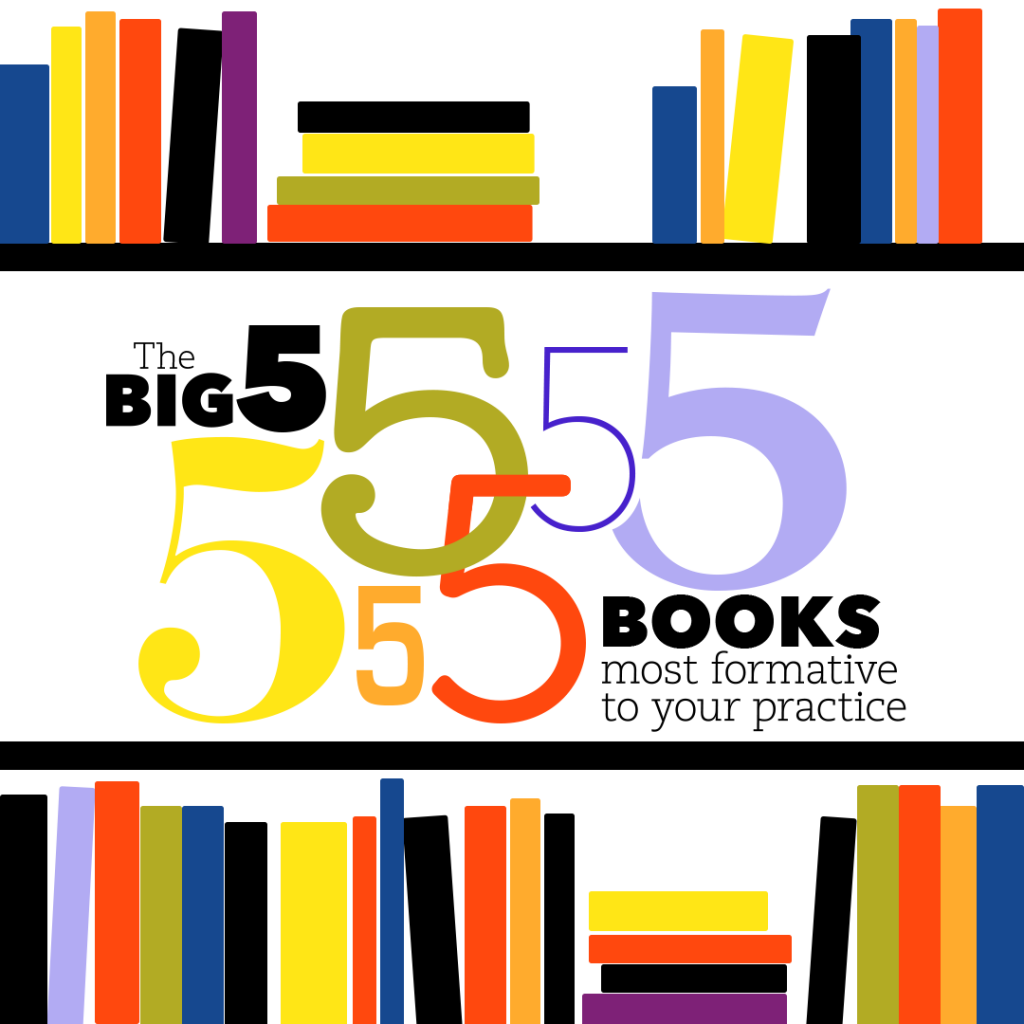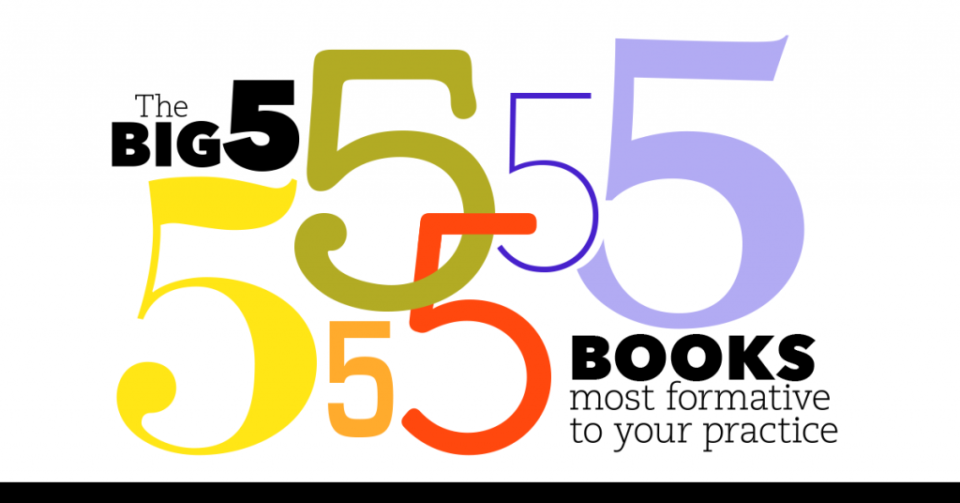
Every so often we like to ask our authors about the books that most affected their teaching, the books that served as turning points in their practice or opened their eyes to a new way of approaching their work, thinking about education, or seeing children. In this installment, we bring you the professional book top five of Ken Lindblom, Associate Professor of English and Associate Dean for Academic Programs in the School of Professional Development at Stony Brook University (SUNY), and former high school English teacher. Ken has also served as the editor of English Journal and is on the Executive Board of the Conference on English Education (NCTE). Ken is a co-author of the Heinemann book Making the Journey, fourth edition, which published in the fall of 2016.
Twenty-nine years ago I received news of my student teaching placement at East Hampton High School on the East End of New York’s Long Island. I thought I was earning a teaching credential as a “back up,” in case my future as a journalist didn’t pan out. It turned out I thrived on the energy of students and I was utterly entertained by the crazy antics of adolescents. After about two weeks in the classroom, I knew I was hooked.
But it wasn’t until I began teaching full-time that September at Columbia High School in upstate New York that I began to see teaching English as a profession. My veteran colleagues introduced me to ranges of views and they took me to professional conferences sponsored by the National Council of Teachers or their local affiliates. Books I was assigned in my graduate courses at SUNY Albany exposed me to a new world of intellectual depth.
To pick my Big Five, those books that most influenced my career, is a difficult but delicious challenge. Why not just ask me about my Big Five meals? Or Big Five beers? Or Big Five first dates? Just kidding about the dates. (My wife’s an English teacher, too, so she may read this.)
My Early Years
Like many of us, I feel like I need to apologize to every student I taught in my first year. Those students sat through some awfully ill-advised and terribly boring classes. But three important books gave me dramatic insights about what it means to teach--or, rather, for students to learn.
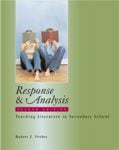 Robert Probst’s Response and Analysis: Teaching Literature in Secondary School opened my eyes to truly innovative ways to explore literature with my students. His easy-to-understand explanations of complex reading theory and his applications of them to classroom teaching were game-changers for me. Probst taught me to empower my students as readers, even as theorists. He draws admirably upon Louise Rosenblatt’s work which I swallowed in great gulps years later. In my early years of teaching, though, I needed Probst’s guidance and even permission to allow my students to bring their own analytical skills to literary reading. Before reading his book, I spent a lot of time explaining my ideas and sending students on pointless symbol hunts.
Robert Probst’s Response and Analysis: Teaching Literature in Secondary School opened my eyes to truly innovative ways to explore literature with my students. His easy-to-understand explanations of complex reading theory and his applications of them to classroom teaching were game-changers for me. Probst taught me to empower my students as readers, even as theorists. He draws admirably upon Louise Rosenblatt’s work which I swallowed in great gulps years later. In my early years of teaching, though, I needed Probst’s guidance and even permission to allow my students to bring their own analytical skills to literary reading. Before reading his book, I spent a lot of time explaining my ideas and sending students on pointless symbol hunts.
In those early years I encountered the simplest and yet most powerful book on teaching writing that I’ve read to this day: Peter Elbow’s Writing Without Teachers. Elbow’s writing is so clear and elegant, it’s hard to believe he struggled with writer’s block so badly that he had to drop out of Harvard. It was that very struggle that inspired Elbow to invent freewriting, writing as process, thinking about writing as growing and like cooking--concepts that revolutionized writing instruction. Elbow convinced me to give up working from the rigid outline model I’d been using since seventh grade (and teaching to my students) and instead embrace a looser style allowing badly formed ideas to hit the page, later to be molded--through stages of response and revision--into something really worth reading
A third book that meant a tremendous amount to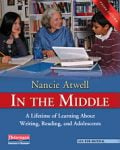 me was Nancie Atwell’s In the Middle, from which I learned the powers of writing and reading workshops forengaging students in their own learning. But Katie Wood Ray does such an eloquent job describing its impact in her Big Five blog, I won’t claim it here.
me was Nancie Atwell’s In the Middle, from which I learned the powers of writing and reading workshops forengaging students in their own learning. But Katie Wood Ray does such an eloquent job describing its impact in her Big Five blog, I won’t claim it here.
Mid-Career
 Saying that Patricia A. Dunn has influenced my thinking would be like saying happy hours have influenced Friday evenings. Her work over the past two and a half decades has been a constant source of new ideas and challenges. In Talking, Sketching, Moving: Multiple Literacies in the Teaching of Writing, Dunn shows with practical examples for teachers at all levels how they can harness physical motion, conversation, drawing, and more to help students improve their writing. For most English teachers, writing comes pretty easily. Patricia Dunn has found tremendously useful ways to assist those who don’t come easily to the written word. Dunn’s ingenuity, willingness to stretch outside her comfort zone, and her dedication to students continue to inspire me.
Saying that Patricia A. Dunn has influenced my thinking would be like saying happy hours have influenced Friday evenings. Her work over the past two and a half decades has been a constant source of new ideas and challenges. In Talking, Sketching, Moving: Multiple Literacies in the Teaching of Writing, Dunn shows with practical examples for teachers at all levels how they can harness physical motion, conversation, drawing, and more to help students improve their writing. For most English teachers, writing comes pretty easily. Patricia Dunn has found tremendously useful ways to assist those who don’t come easily to the written word. Dunn’s ingenuity, willingness to stretch outside her comfort zone, and her dedication to students continue to inspire me.
Leila Christenbury’s Making the Journey: Being and Becoming a Teacher of English Language Arts wasn’t published the first time until I 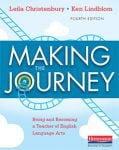 was already teaching college, but her chatty, collegial treatise still made an instant impression. Her advice on teaching literature, writing, and language was so wise and yet so friendly, I read it right through the first time I picked it up. That I recently co-authored the fourth edition of Making the Journey with my now good friend Leila is an amazing testament to the wonderful ways in which English teachers’ journeys can intersect.
was already teaching college, but her chatty, collegial treatise still made an instant impression. Her advice on teaching literature, writing, and language was so wise and yet so friendly, I read it right through the first time I picked it up. That I recently co-authored the fourth edition of Making the Journey with my now good friend Leila is an amazing testament to the wonderful ways in which English teachers’ journeys can intersect.
More Recent
As I became more comfortable teaching, settled into tenure, I became increasingly concerned about the larger system to which I contribute as a pedagogue. If we’re all part of “the machine,” exactly what cog am I? Alfie Kohn, one of education’s most respected (and witty) contrarians helped me realize that teachers can either help promote democracy or instill compliance. I have read and enjoyed a great deal of Kohn’s work, but the book I recommend most is Beyond Discipline: From Compliance to Community. Kohn has a way of making his positions so clear, so obvious, so incredibly well researched that one wonders how anyone could disagree. And yet his views are often counter-cultural and earth-shakingly challenging. Kohn helped me learn that applying behaviorist management techniques may appear to work (i.e., to quiet students down and make it look like they are involved), but that real education can only be had when students are free to engage, challenge, and act. Democracy is messy and sometimes loud. Good education is too.
We English teachers are a lucky bunch. Many gigantic thinkers have come before us, and quite a few others travel among us now. By cracking a book, or flicking on a Kindle, we can walk beside them anytime.
